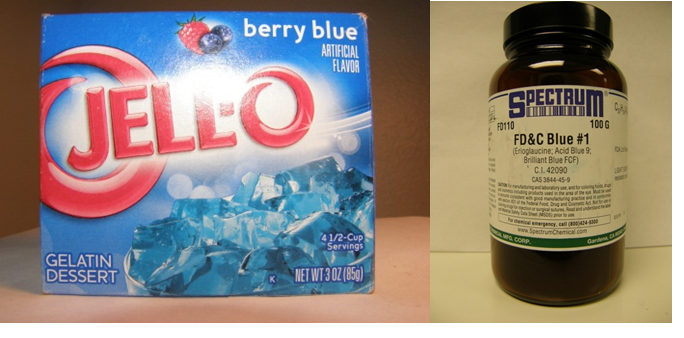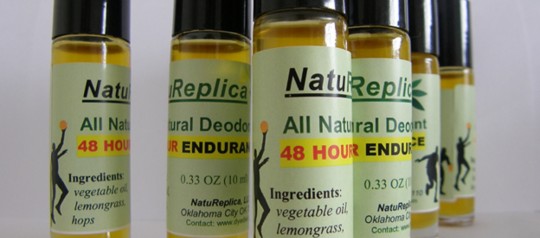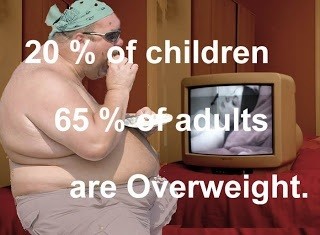Jell-O Berry Blue 1
A Conflict of Interests: Corporate Profit vs Public Health
It seems that many food manufacturers want the consumer to stay confused about the content of their products as much and as long as possible. For decades they have been using same old trick of giving fruity names and depicting fruits on the labels of what has nothing or little to do with the fruits (see Twizzlers). Eventually their lies have become evident for growing number of the consumers. In the fear of losing their grips, it seems, the food industry has invented a new gimmick. By switching from “blueberry” to “berry blue” (see recently reviewed Tam-E Yummies) the manufacturers silently agreed that their products contain no real blueberries but they still want you to believe that it may somehow be related to a berry anyway. DyeDiet doesn’t buy it!
CONSUMERS, do not give up! A little more pressure for a bit longer time will persuade the food surrogate producers to add real blueberries for us.
Here is another example, Jell-O Berry Blue sugary gel joy from Kraft Foods. It is a “simply stupid” mix of:
- 86% of sugar
- 9% of gelatin
- 3% of adipic acid (see explanation below)
- 2% of acetic acid, fumaric acid, sodium citrate, dipotassium phosphate, natural and artificial flavors and, of course,
- FD&C Blue 1 artificial color, 5 mg per 3 OZ (85 g) container as detected by the DyeDiet.
Jell-O Berry Blue Risk Score Diagram, DDRS ~ 46
As you can see from the DyeDiet “Dyegram,” sugar and gelatin are the only TWO nutrients, in the powder. The rest EIGHT ingredients are absolutely wasteful for the human body.
Food Industry’s approach: WE will add to YOUR food whatever WE need to trick you into buying our non-nutritional food surrogates unless there are enough of documented evidences of the adverse health effects.
In particular, based on this approach they will keep heavily adding the artificial food colors. But when enough is enough and who decides? Why growing allergies, asthma, and autism are NOT enough? You tell me. How about evidences that the food additives DO NOT cause adverse health effects? No answers. This means that the nationwide toxicology experiment running by the food industry will continue. Good luck surviving! (Read the Feingold Association’s file: Behavior, Learning and Health).
Adipic acid helps gelatin to maintain the gel. It is a dirt-cheap building block in the production of nylon, one of the most prominent synthetic polyamide polymers. In the manufacturer’s research founded by DuPont, the lowest acute toxicity of adipic acid in rats of LD50 > 5 g/Kg was reported. This means that 50% of the tested animals were found dead at this dosage. They also have found that it was moderately toxic to fish. But according to Wikipedia adipic acid is mildly toxic for rats too with LD50 3.6 g/Kg of body weight. The toxicity in mice was found even higher of LD50 1.9 g/Kg ( see Section 11 of Adipic acid MSDS). So what is adipic acid’s toxicity in human, lower or higher? No one knows. The assumption is: A little bit of poison is not going to hurt you and your children. While perhaps this is often true for a single small dose of a toxin, in the long run the uncertainty comes from many factors. Here they are to name a few:
- A person’s age and gender
- A state of health and a lifestyle
- A term of the exposure (for how long)
- An intensity of the exposure (how much).
Taking into account that there are over 3000 food additives circulating in the US foods and beverages it is nearly impossible to establish a solid link between a food additive and a health condition except extreme cases when an autopsy clearly shows the issue (read Blue Colon at Autopsy).
Because you cannot conduct food additive toxicology studies in humans on ethical grounds, food industry came up with so called Acceptable Daily Intake (ADI) value. This comes from a value of No Observable Adverse Effect Level (NOAEL) found in laboratory animals that is scaled down 100 times to be accepted as safe in humans. ADI is included in the FDA guidance for industry but ACTUAL toxic effects of chronic exposure to many food additives remains unknown.
The DyeDiet’s respond: We, the consumers, we are NOT your livestock! We will not buy your ridiculous non-nutritional fake food. (Read the CSPI report: Diet, ADHD and Behavior). We will eat food = nutrients to stay healthy and happy free human beings.
Our alternative: Mix nine parts of sugar with one part of gelatin. Squeeze a lemon and an orange, add some blueberries and make a gallon of your own nutritious gel 1000 times healthier than any disgraceful Jell-O feedstock of chemicals!
Category: Food Dyes Exposure, Gelatin dessert









Admin – I’ve checked out http://www.dyediet.com/2011/06/22/food-dyes-exposure/jell-o-berry-blue-1 and I really like your writing style like in your post Jell-O Berry Blue 1 | Dye Diet. I am looking for blog authors who would like to write articles as either a full time job or part time job (for some extra money). I think your writing style would work very well. You receive pay per article, anywhere from $5 to $50 per article depending on the topic, article length, etc… If interested you can find more information at http://www.OnlineHomeWriter.net. Have a good day – Tina
My alternative: buy unflavored gelatin, make it with real fruit juice, and follow the package instructions,
No doubt, this is much better choice!